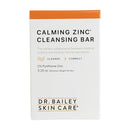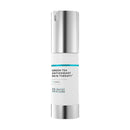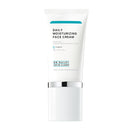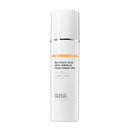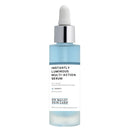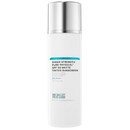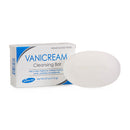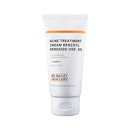Kim Kardashian's Dyschromia Skin Disorder

What is Kim Kardashian's dyschromia skin disorder? Recently she has opened up to fans about her struggle with it. What is dyschromia, how common is it, how serious is it, what are the most common causes, and how do you treat it? I'm going to help you understand what the term 'dyschromia' means, how it happens to someone's skin and what you can do about it.
What is a dyschromia skin disorder?
Dyschromia is a melanin-based pigment irregularity where areas of skin have dramatically different skin pigment - and thus color - compared with the rest of their skin.
In dyschromia, skin melanin is either increased or decreased in an area compared to the rest of a person’s skin leading to skin color irregularities. - Dr. Bailey
Normal human skin pigmentation color

The pigmentation of your skin color is determined by the amount of melanin pigment in your skin. This is fairly even over a localized area of your skin, though it varies a lot between the skin on different areas of your body (such as your face versus groin).
Your skin's melanin pigment is normally formed in, and stays in, the top layer of your skin called the epidermis, where it is usually evenly distributed.
How does your skin make melanin pigment?

Melanin is made by melanocytes which are specialized cells present in the bottom (basal) layer of the epidermis. Melanocytes produce melanin and package it into 'granules' called melanosomes. People with darker skin pigment have larger melanosomes with more melanin pigment in them. Skin melanocytes always produce some melanin but UVB sun exposure stimulates them to make more melanin than they normally do. This is important when it comes to understanding the causes and treatment options for dyschromia.
The melanin granules are transferred to the other cells in the epidermis called the keratinocytes. This is actually important in determining how 'tan' your skin looks. UVA causes a rearrangement of existing melanin within the cells but it does not stimulate melanin synthesis.
The keratinocyte cells holding the melanin granules are layered in the epidermis as shown in the above diagram. These cells gradually transit up the layers, eventually becoming dead cells in the stratum corneum and sloughing off. They bring the melanin granules with them as they grow up and off of your skin which is why a tan (and some types of dyschromia) gradually fade.
A dyschromia skin disorder can negatively impact a person's sense of wellbeing.

Pigmentary skin problems are often difficult to hide and can be very embarrassing to patients. The negative psychosocial impact of dyschromia can significantly reduce a person's sense of self-esteem and their quality of life. For example, vitiligo, an autoimmune condition that results in the destruction of melanocytes with resultant white patches of skin, is well known to negatively impact a person's sense of wellbeing. Melasma is a hyperpigmentation dyschromia, typically limited to facial skin, where the psychosocial negative impact is well documented. Hyperpigmented acne scars are another dyschromia skin problem that negatively impacts a person's self-esteem.
The bottom line is that there is scientific proof that dyschromia can have a significant impact on a person's wellbeing.
Kim Kardashian has revealed that her dyschromia skin problem is hyperpigmentation from her psoriasis and that she has suffered from it for years.
UV exposure makes dyschromia worse
Because the problem with dyschromia is due to melanin, it is important to reduce melanin synthesis as much as possible by sun protecting skin, especially injured skin. Blocking rays with UPF 50 clothing and hats is important. Wearing broad spectrum mineral sunscreen is the best choice for exposed skin.
Wearing a tinted facial sunscreen that contains iron oxide will also help to block blue light from device screens that has been shown to contribute to skin hyperpigmentation problems. - Dr. Bailey
Sheer Strength Pure Physical Sunscreens provide medical-grade sun protection for dyschromia.
The Matte Tinted Sunscreen SPF 30 provides pure mineral zinc oxide and titanium dioxide UV protection and also contains iron oxide.
 Iron oxide concentration can be boosted with application of the SPF 50 Refresh Powder Sunscreen that is particularly rich in iron oxide. This powder SPF is also the easiest way to reapply sunscreen throughout the day.
Iron oxide concentration can be boosted with application of the SPF 50 Refresh Powder Sunscreen that is particularly rich in iron oxide. This powder SPF is also the easiest way to reapply sunscreen throughout the day. Water Resistant SPF 50 Spray gives tenacious pure mineral UV protection to hyperpigmentation prone skin.
Sheer Strength Pure Physical Sunscreens are
- free of chemical sunscreen filters,
- formulated with additional antioxidants proven to reduce free radical sun damage, and
- are weightless and easy to use.
What are the most common causes of hyperpigmentation dyschromia?
 Post-inflammatory hyperpigmentation
Post-inflammatory hyperpigmentation

You will see the term 'post-inflammatory hyperpigmentation' abbreviated PIH. As the name implies, skin inflammation from an injury or rash heals leaving a darker skin color. This includes healing after rashes and skin problems such as psoriasis, acne, razor bumps and bug bites. Burns also commonly heal with PIH.
Following skin inflammation, melanocytes respond with hyperactivity that can lead to dark discoloration. People with darker skin are more prone to melanocyte hyperreactivity secondary to inflammation and are therefore more prone to heal with dark areas of PIH. The melanocyte pigment of PIH can stay in the epidermis or drop into the second living skin layer called the dermis.
How do you know if PIH pigment is in the epidermis or dermis?
- When the PIH is limited to the epidermis, the color is brown.
- When pigment drops into the dermis (the second living skin layer), the color is more of a blue/gray discoloration.
When melanin has dropped into the dermis it is harder to correct because it acts like tattoo pigment and can persist for a year or even longer.

Dyschromia from psoriasis
Psoriasis commonly heals with post-inflammatory dyschromia. Kim Kardashian has openly shared her struggle with this skin problem. Psoriasis is a rash that is often inherited and results in crusty red plaques on the skin. People with dark skin tone are more likely to heal with hyperpigmentation dyschromia that can last a long time. People with fair skin who suffer from psoriasis may actually heal with white dyschromia patches that normalize in color faster.
Sun allergic and sun-toxic reaction dyschromia
A classic example of a toxic reaction to the sun that heals with hyperpigmentation is the 'margarita burn'. Lime juice contains compounds that make skin sun sensitive while also stimulating melanin pigment production, resulting in a burn that heals with hyperpigmentation. Interestingly, the compounds in lime juice that cause this are similar to a medicine we combine with medical UVA exposure to treat psoriasis.
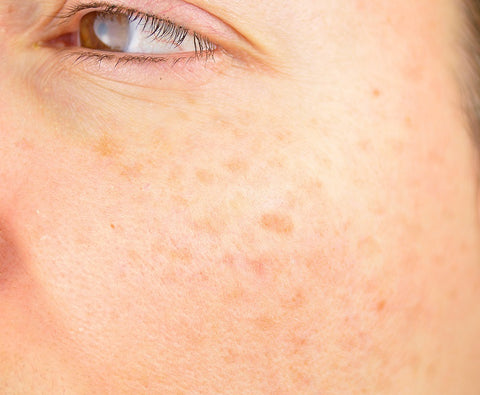
Tanning beds and sun exposure result in dyschromia in the form of freckles, called lentigines.
Freckles result from chronic UV exposure and intense acute UV exposure like a severe sun burn. Because psoriasis is often treated with UV light treatment, this is another reason for hyperpigmentation dyschromia in psoriasis patients.
The bottom line with hyperpigmentation dyschromia skin problems:
People with darker skin tones are more likely to suffer hyperpigmentation dyschromia skin problems, including after the healing of psoriasis, acne and other skin injuries. Lighter skin tones have skin with less melanin and are less at risk; healing may leave redness and an eventual scar, but there is less risk of excessive brown post-inflammatory hyperpigmentation.
Additionally, sun exposure or tanning bed ray exposure leads to melanin formation and redistribution of melanin granules in skin. When inflamed skin is exposed the melanin stimulating UV rays, the melanin granules may drop into the second dermal skin layer and leave permanent dyschromia.
The best way to treat dyschromia hyperpigmentation

Avoid UV exposure to reduce triggering melanin synthesis by melanocytes. This allows current skin melanin to fade as epidermal keratinocytes gradually grow off the skin.
If melanin is located in the dermal layer, be patient and continue sun protecting the skin until the rash has healed. Immune cells in the dermis gradually dissolve skin melanin over time.
Skin lightening products that inhibit melanin formation can be used to reduce melanin synthesis. These are called 'tyrosinase inhibitors' because the key enzyme responsible for melanin synthesis is called tyrosinase. The most effective tyrosinase inhibitor available is hydroquinone.
My Pigment Fading Pads contain the strongest hydroquinone level available without prescription combined with other botanical tyrosinase inhibitors such as kojic acid and arbutin.
List of tyrosinase inhibitors commonly used in dermatology to fight skin hyperpigmentation skin problems:
- Hydroquinone
- Arbutin
- Kojic Acid
- L-ascorbic acid vitamin C
- Ellagic acid (as found in Phyllanthus emblica L. fruit extract)
- Tranexamic acid (oral medicine with severe side effects that is not significantly effective when used topically, in my opinion)
- Azelaic acid (can be irritating in my experience)
My Pigment Fading Pads contain the first 5 tyrosinase inhibitors plus Silybum Marianum (Silymarin) Fruit Extract and Arctostaphylos Uva Ursi (Bearberry) Leaf Extract which are additional botanical melanin pigment inhibitors.
Skin care routine for treatment of dyschromia skin problems
In addition to sunscreen and tyrosinase inhibitors, there are 2 additional ingredients beneficial for normalizing skin pigment irregularities:
- Retinoids, such as topical prescription tretinoin and non-prescription retinol, inhibit skin pigmentation by a number of mechanisms.
- Alpha hydroxy acids such as glycolic acid also inhibit skin melanin pigmentation by a number of mechanisms.
My approach is to treat dyschromia with an "all of the above" approach. I use a complete topical medical-grade skin care routine that combines mineral sunscreen, tyrosinase inhibitor ingredients, retinol and glycolic acid. My Ultimate Pigment and Sun Damage Repair Kit includes this strategy and works well to correct facial skin hyperpigmentation.


